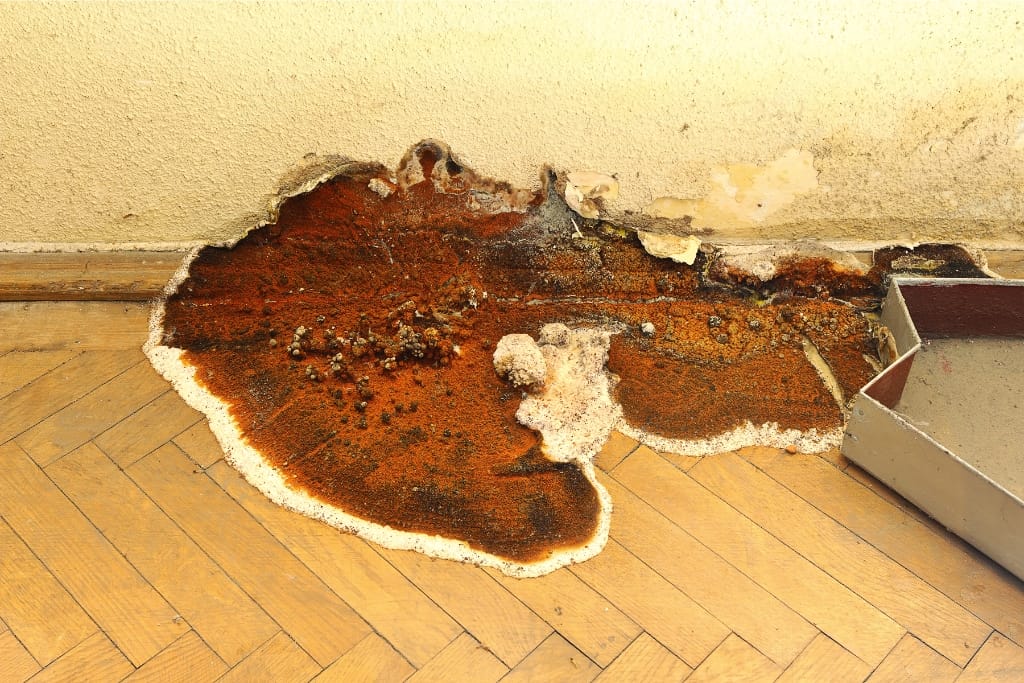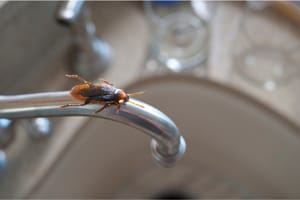Dry rot is a homeowner's nightmare that silently damages wooden structures, threatening the integrity of your home.
Often unseen until significant harm has been done, it thrives in damp, poorly ventilated areas and can cause substantial repair costs if not addressed promptly.
Understanding the common pitfalls when dealing with dry rot is crucial to effectively managing and preventing it in your home.
Whether you’re safeguarding a new property or attending to an aging one, being aware of these mistakes can save both time and resources.
Are you ready to arm yourself with the knowledge to protect your home from this hidden threat?
Dive into our article now to learn how to combat dry rot smartly.
1)) Ignoring Early Signs Of Dry Rot
Ignoring the early signs of dry rot can lead to extensive damage and costly repairs in your home.
Often, homeowners overlook the initial indicators, which can range from a musty odor to discoloration or a spongy texture on wood surfaces.
These symptoms, although subtle at first, signify the beginning stages of a dry rot infestation, which, if neglected, may spread quickly, compromising the structural integrity of your property.
Timely identification and intervention are essential to prevent the full-blown development of dry rot.
By prioritizing regular inspections and being vigilant about these early warning signs, you can maintain a healthier and more secure home environment.
2)) Using Inadequate Repair Materials
Opting for inadequate repair materials when addressing dry rot is a common misstep that can undermine your efforts to safeguard your home.
Many homeowners, in a bid to cut costs, choose substandard or unsuitable materials that fail to resolve the underlying issues effectively.
For example, using untreated wood as a replacement for rotted areas can lead to a recurrence of the problem, as it lacks the necessary protection against moisture.
Similarly, relying on non-specialist sealants may not provide the essential barrier needed to prevent further decay.
It's crucial to invest in high-quality, moisture-resistant materials specifically designed for repairing dry rot.
By making informed choices about the materials you use, you can ensure long-term durability and prevent the cycle of rot from repeating itself.
3)) Failing To Address Moisture Sources
Failing to address moisture sources is a crucial oversight that can perpetuate the presence of dry rot in your home.
Moisture is the primary catalyst for dry rot, and without proper management, any repairs made can become futile.
Homeowners may neglect to investigate and remedy moisture-related issues such as leaky pipes, poor drainage systems, or inadequate ventilation, which can create a breeding ground for dry rot.
Overlooking these factors allows moisture to continue infiltrating wooden structures, setting the stage for persistent decay.
To effectively combat dry rot, it's essential to identify and eliminate all moisture sources, thereby removing the fundamental conditions that allow dry rot to thrive.
By doing so, you can ensure that your preventive measures and repairs are effective in maintaining the structural health of your property.
4)) Overlooking Structural Vulnerability
Many homeowners underestimate the impact of overlooking structural vulnerability when contending with dry rot.
This oversight often stems from a failure to recognize that dry rot preys on the weakest areas of a building's structure, such as cracked beams, loose joints, or poorly maintained foundations.
Ignoring these weaknesses can accelerate the decay process, as dry rot spreads easily through compromised wood, further destabilizing the entire framework.
Regular professional assessments and proactive reinforcement of vulnerable areas can help mitigate these risks.
By ensuring that your home's structure is robust and well-maintained, you significantly lower the chances of dry rot taking hold and causing severe damage.
5)) Incomplete Rot Removal
Failing to completely remove dry rot during repairs can leave your home vulnerable to further deterioration.
Incomplete rot removal typically results from inadequate inspection or a rushed approach where affected wood is not fully cleared of decay.
This oversight allows residual rot spores to persist and eventually spread to previously unaffected areas.
Even a small amount of leftover rot can undermine the integrity of new materials used in repairs, leading to a cyclical issue that seems to never fully resolve.
It's vital to conduct thorough checks and ensure all decayed wood is entirely eradicated before implementing new constructions or fillings.
By committing to exhaustive removal, you secure the stability and longevity of your home’s structural elements.
6)) Relying On Temporary Fixes
Relying on temporary fixes when dealing with dry rot is a pitfall that can exacerbate the issue over time.
Quick solutions like patching up affected areas with superficial treatments or simply painting over damaged wood might provide an illusion of repair, but they do not address the underlying rot problem.
These shortcuts often lead to more profound structural weaknesses, as the dry rot continues to spread unchecked beneath the surface.
To effectively remedy dry rot, it's imperative to undertake comprehensive repairs that eliminate the root cause and restore the wood's integrity.
By choosing permanent solutions from the start, you protect your home from ongoing deterioration and avoid the escalating costs associated with delayed interventions.
7)) Neglecting Regular Inspections
Neglecting regular inspections is a significant mistake that can allow dry rot to go undetected until it causes extensive damage.
Regular inspections are essential for identifying early signs of dry rot before it can compromise the structural integrity of your home.
Many homeowners may be unaware of the subtle symptoms of dry rot, such as a musty odor or discolored wood, making routine professional assessments even more critical.
Skipping these periodic evaluations can lead to unchecked growth of rot, which often requires more invasive and costly repairs once it is finally identified.
By prioritizing systematic inspections, you can catch dry rot in its initial stages, address it proactively, and preserve your home's structural soundness for the long term.
8)) Misidentifying Rot Causes
Failing to accurately identify the causes of rot is a critical error that can undermine efforts to protect your home from dry rot damage.
This misstep typically arises from a lack of awareness regarding the conditions that promote rot, such as high humidity, poor ventilation, or persistent leaks.
Homeowners might mistakenly attribute rot to inferior building materials or neglect the role of these environmental factors, leading to ineffective mitigation strategies.
Accurate diagnosis of rot causes requires a comprehensive understanding of the environment and the behaviors that facilitate decay.
By correctly identifying and addressing all contributing factors, you can create a more effective defense against dry rot, ensuring the long-term durability and safety of your home.
9)) Underestimating The Spread Of Damage
Underestimating the spread of damage caused by dry rot can lead to severe structural consequences for a home.
Many homeowners fall into the trap of assuming that damage caused by dry rot is isolated to the visibly affected areas, but dry rot possesses the capability to rapidly infiltrate a much larger section of the woodwork and structural components than initially detected.
This misjudgment often stems from not fully understanding how dry rot can travel through porous materials, exploiting any damp conditions to gain a stronger foothold.
By the time further rot becomes apparent, it might have already compromised significant portions of the building's framework, necessitating extensive and costly repairs.
To avert such outcomes, it's crucial to have a keen awareness of the potential extent of dry rot damage and to conduct a thorough inspection of surrounding areas once any signs are detected, thereby securing the home's structural integrity.
10)) Delaying Professional Intervention
Delaying professional intervention when dealing with dry rot can have dire ramifications that extend beyond the initial area of concern.
Homeowners often procrastinate seeking expert help, either due to cost concerns or the belief that they can manage the situation independently.
Unfortunately, this hesitation allows the rot to progress unchecked, often escalating into a far more severe issue that is not only harder to rectify but also significantly more expensive.
Dry rot specialists possess the expertise, tools, and knowledge necessary to accurately assess the extent of the problem and implement effective remediation strategies that fully eliminate the rot.
Acting promptly with professional assistance ensures that the dry rot is addressed comprehensively, safeguarding your home's structural health and preventing future issues that untreated rot might cause.
Conclusion
Addressing dry rot proactively is essential to maintaining the structural integrity and safety of your home.
Each section of this article highlights critical points about the importance of early detection, the need for regular inspections, and the value of professional intervention.
By understanding and avoiding common mistakes such as overlooking potential causes or underestimating damage spread, homeowners can significantly reduce the risk of severe dry rot consequences.
Taking informed and immediate action not only prevents the escalation of damage but also ensures cost-effective remedies.
Ultimately, investing time and resources into proper dry rot management protects your home from unnecessary deterioration and preserves its value for the future.
Download Our Free E-book!








